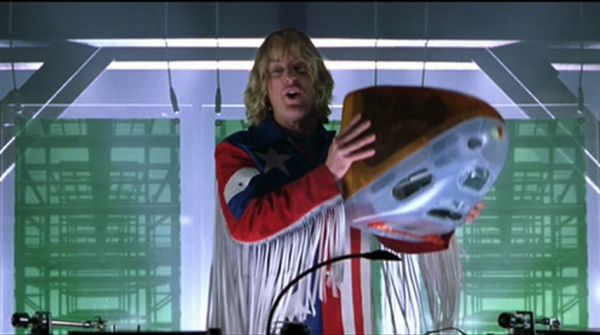File Server Builder's Guide
by Zach Throckmorton on September 4, 2011 3:30 PM ESTConclusion
Home file servers can be enormously useful in a multi-system residence. Adding such a specialty system to a home network is easy, and certain file server operating systems are also very simple to set up and administer. A home file server is also an easy introduction to servers in general. Remember, the primary purpose of a home file server is storage - so rather than building around the CPU or GPU, build a home file server around the HDDs. Home file servers don't need powerful CPUs - instead focus on power savings and adequacy rather than raw processing muscle. While it's difficult - perhaps impossible - to know what HDD models are most reliable, choose your case carefully and take time managing cables so you can maintain optimal environments for your drives. Buy high-quality PSUs so your HDDs are supplied with clean power. And of course, back up your data!
"The files are in the computer. It's so simple!"











152 Comments
View All Comments
Emantir - Sunday, September 4, 2011 - link
Im using my file server since october'10 it consists of:- Lian Li PC-Q08
- Zotac NM10 DTX Wifi
- 200GB Matrox Sata HDD (System)
- 4x 2TB Western Digital WD20EARS (Storage)
- Asus EN210 Silent
Sporting Ubuntu 10.10 with Software Raid 5 and XBmC for HD Playback, works like a charm.
XBmC Remote Apps exist for iOS and Android so i skipped buying a MCE Remote.
Emantir - Sunday, September 4, 2011 - link
Uh, forgot the Problems:- Asus EN210 blocks one Sata Port
- There are some problems concerning the JMicron Sata Multiplier and Linux. one drive gets miserable write speeds, thus making the whole raid 5 somewhat slow. More: http://goo.gl/cM0gg
Lonyo - Sunday, September 4, 2011 - link
Does the NM10 support staggered spin-up of hard drives?Emantir - Sunday, September 4, 2011 - link
AFAIK No, Im using a 300W PSU anyway, thus high initial current isn't a Problem.pvdw - Monday, September 5, 2011 - link
But you should have a good quality PSU to give nice clean, reliable current. Loads of PSUs are just rubbish.Lonyo - Sunday, September 4, 2011 - link
You may have mentioned needing a good power supply, but when you talk about Atom and Zacate boards, low power solutions, and low power "green" drives, you don't focus on the fact that total system power use in typical conditions could be lower than 30w. If you are buying a beefy 500w power supply, you could be wasting a LOT of power due to efficiency issues.The 80PLUS rating only tests as low as 20% of full load. 30w on a 500w PSU is below 10% load, so you could be getting 70% efficiency.
While it's not a major concern, if you are looking to make things low power to leave it on 24/7, you might want to think about some DC power supplies rather than regular desktop power supplies.
If you are making a 2~4 drive file server based on an Atom system, you could get a 100~120w picoPSU instead of a "real" PSU, and get potentially much higher efficiency than with a 300w+ normal PSU.
Of course, not everyone (especially Americans) cares about efficiency, since for them power is so inexpensive, but for a 24/7 box, why not at least discuss things which might improve power efficiency?
jtag - Sunday, September 4, 2011 - link
I have to say that a file server guide that mentions RAID/NAS really should include a discussion on which drives are suitable for using in a RAID. Not all drives are valid for use in a RAID, not because of reliability concerns, but rather because not all manufacturers support Error Recovery Control (see http://www.csc.liv.ac.uk/~greg/projects/erc/ for more info) in their consumer level drives.I'd very much appreciate it if AnandTech could run the following command on every drive they test and add it to bench, so we could come up with a list of drives that do support ERC:
smartctl -l scterc /dev/sdX
smartctl is available for both Windows and Linux (smartmontools.)
Of course, this may say it is supported, but the real test would be to set timeouts:
smartctl -l scterc,70,70 /dev/sdX
And then cause the drive to have a block error and see if access times out, or causes the drive to drop out of the RAID. This would also be a good test of RAID controller cards, though personally I always use software RAID under Linux.
jtag - Sunday, September 4, 2011 - link
And for the record - I run 6 2TB drives in a RAID-6 (2 drive redundancy) with one hot spare under Gentoo Linux software RAID. My drives are 5 Seagate ST32000542AS and one Samsung EcoGreen F4 HD204UIjwilliams4200 - Sunday, September 4, 2011 - link
Any tips on how to "cause the drive to have a block error"?Rick83 - Monday, September 5, 2011 - link
you can use hdparm to mark a block as faulty, IIRC.